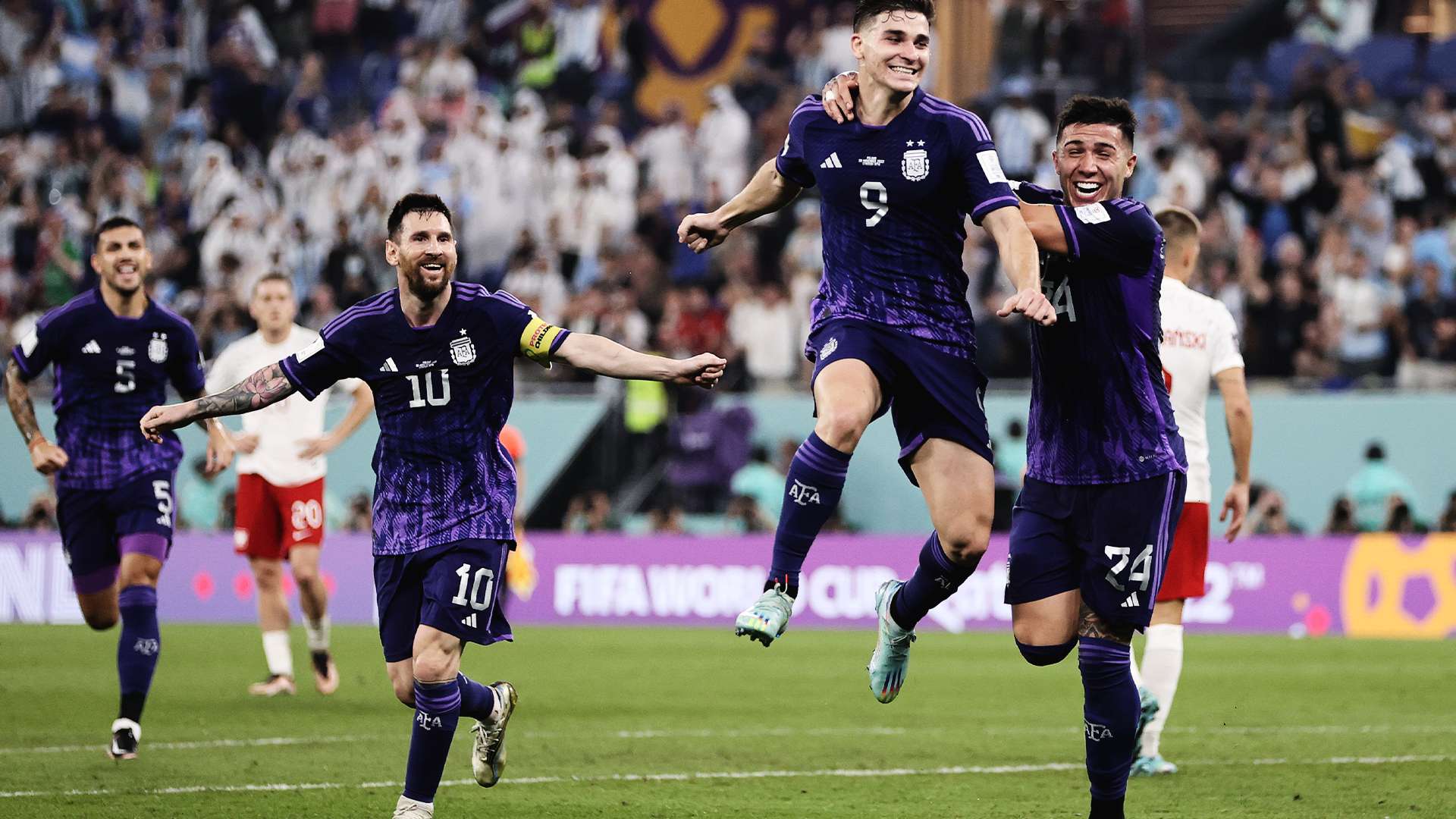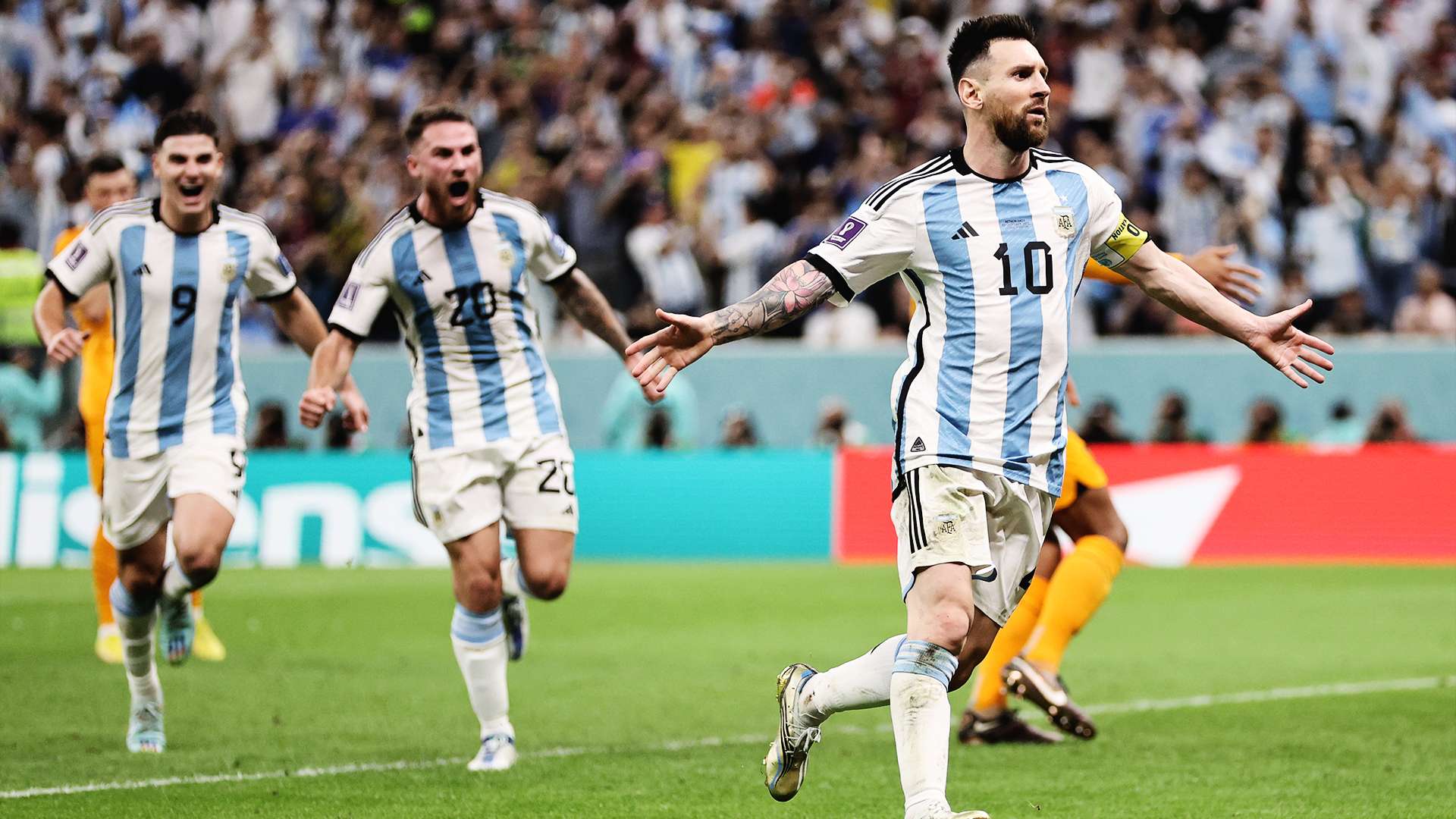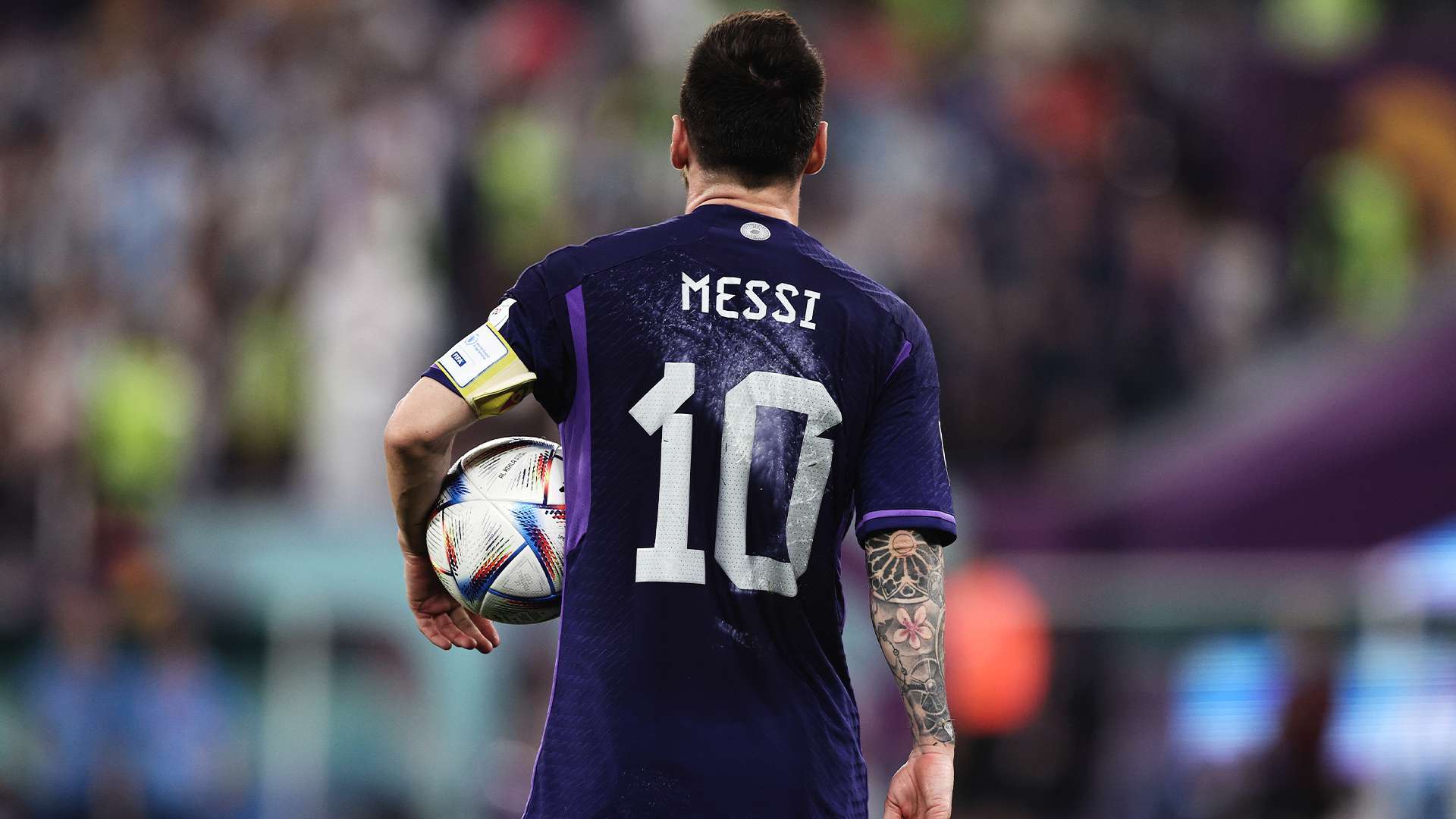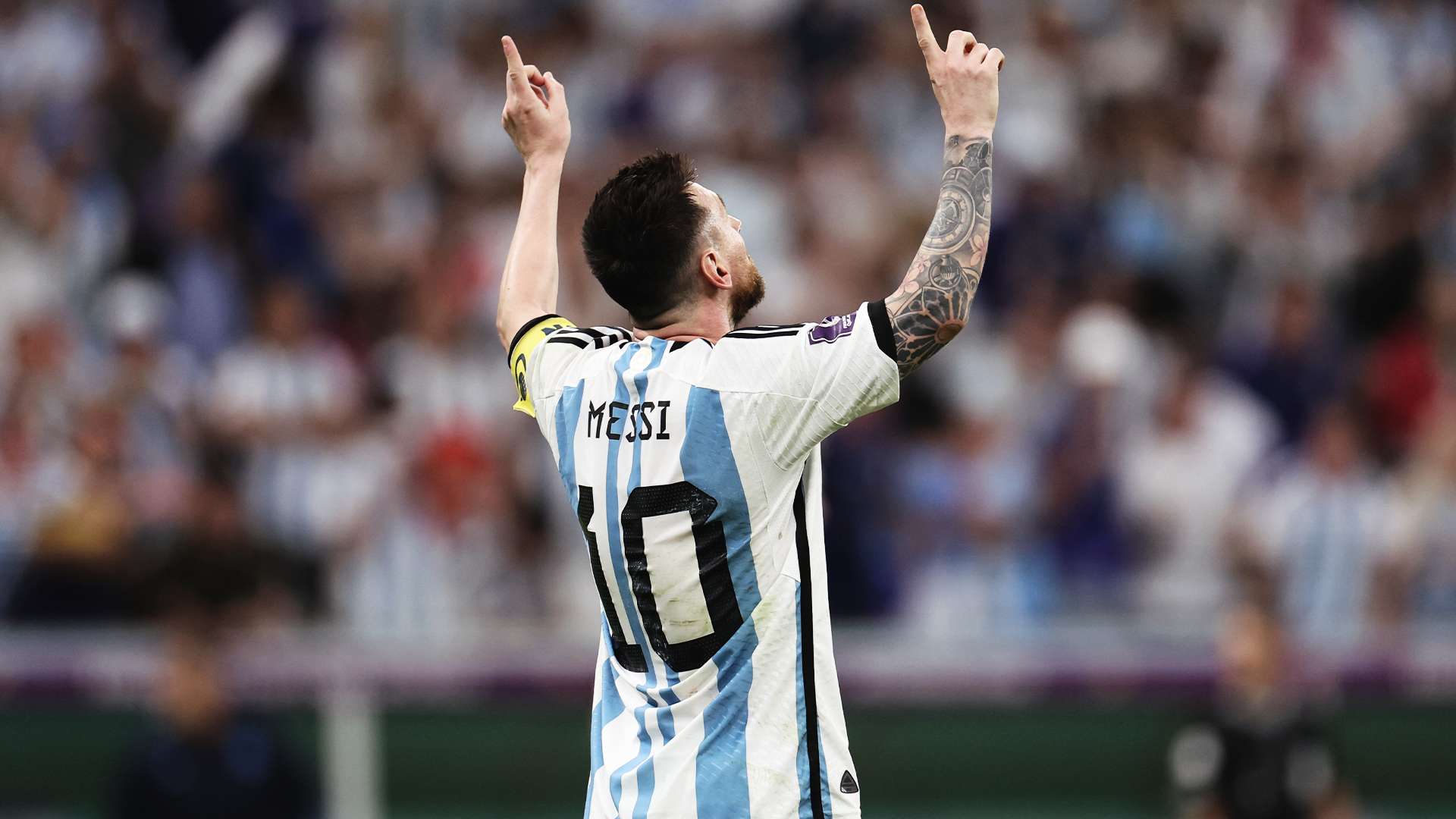Whatever happens in the final stages of Qatar 2022 – whether the narrative arc carries Argentina to victory, or whether one of France, Croatia or Morocco spoils the party – this is almost definitely Lionel Messi’s last World Cup. He’s already said as much. Before the tournament he said it will “surely” be his final World Cup appearance – although he’s come out of international retirement before and who knows what could happen before the USA, where he may even be playing, hosts the tournament in four years?
The story of one of the all-time greats trying to secure the missing piece of his trophy collection has been one of the constant themes at this year’s tournament. The fact that this is likely to be Messi’s last World Cup also fed into the design process at adidas as they created the Argentina home and away kits for Qatar 2022.
“We’re all aware this could be Lionel Messi’s final World Cup,” explains Andrew Dolan, a Senior Product Manager at adidas Football, while speaking to the Footballco Business Podcast. “So I’m obviously aware that in the creation of it you don’t want to do anything that [makes people say] “oh my god, I can’t believe that they would make Messi wear this.”
 Getty Images
Getty ImagesWhile considerations of Messi understandably impact the kit design, they are far from the only influences incorporated into the home and away shirts. Dolan, who specifically worked on the Argentina kits, was joined on the podcast by his colleague Mateo Kossman, who explained that the key factor when designing a national team kit is “to properly read a country’s DNA and culture and bring it to life in a way that they feel represented and proud of what they’re wearing.”
For Argentina’s home shirt, the adidas team achieved this by sticking to the classic blue and white formula the country is known for. “We wanted a blue as close to the national flag as we could get it,” Dolan explains. “We brought in [other] details from the flag as well, with the Sol de Mayo as a sign-off on the back neck. And then we also look into jerseys that they’ve had in the past. We don’t want to recreate something that we’ve had before, but there may be an element of inspiration from a particular jersey or an era that brings nostalgia for the fans."
As well as the references to the country’s flag, the stand-out feature of Argentina’s 2022 World Cup kit is the difference between the stripes on the front and the back. Dolan describes this as an “easter egg detail” that creates a link to Argentina’s World Cup-winning kits of 1978 and 1986. In 1978, Argentina wore a shirt with three blue stripes on the front, while in 1986 there were four blue stripes. This history is then represented on the 2022 home shirt, which has four stripes on the front and three on the back.
While the home shirt honours previous World Cups and traditional colours, Argentina’s away shirt takes a different approach. “At home, we went through this iconic simplicity of trying to make an icon for the nation,” says Kossman, “whereas on the away kit [we said] as we have been more progressive let’s explore where this country or where this culture can go, and we can do it in a different way.” Dolan agrees, explaining that the design team “wanted to tell a bolder story,” through the overall design and colour palette. “Purple is the colour of the women’s feminist movement, and women’s rights, and equality throughout the world.”
 Getty Images
Getty ImagesThe difference between home and away shirts is also reflected in the difference between the fans who opt for each one. “We might have different consumers for home and away jerseys,” Dolan continues. “Home might be the more traditional fan expecting that throwback or traditional look, while away is the polar opposite fan that maybe doesn’t just wear the shirt to play football. They wear it with jeans and go out with friends or, as we’re seeing with younger fans today, they’re wearing it more and more in lifestyle scenarios.”
Potential fans and consumers obviously play an important role in the design of the kit, but both Kossman and Dolan are keen to stress that the performance side of things comes first. “At the end of the day, when we build products at adidas football, the main goal is sports performance, is the football on the pitch,” Kossman says. “We are an authentic football brand. That’s where we were born, and that’s where we live.”
 Getty Images
Getty ImagesFrom the considerations of fans to professional players – and from previous national kits to references to women’s equality – the design team at adidas incorporated a wide range of influences into the Argentina kits this year. Despite that, the figure of Messi still looms large over the proceedings. “The further Argentina go, the better they do in this jersey, the more iconic it will become,” Dolan says. “So fingers crossed they can go all the way. Messi can lift the trophy in one of those two kits, and then they become an all-time classic forever.”
Listen to the full interview Footballco Business podcast here.


